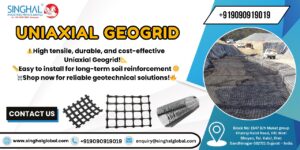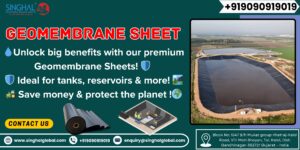Drainage cells are used in a variety of industries to provide efficient drainage and reduce surface water runoff. From construction sites to sports fields, these cells provide the perfect solution for redirecting water and ensuring its safe dispersal. Discover the many uses of drainage cells and find out how these systems can benefit your unique project.
Understanding the Benefits of Drainage Cell Systems.
A drainage cell mat is a cost-effective way to enhance drainage efficiency. They offer an easy, quick solution that can be installed without digging large trenches or hauling bulky equipment around; some applications don’t even require any excavation. Furthermore, they reduce the time and materials involved in managing stormwater and provide stability on slopes and steep embankments. As such, drainage cells serve as a great resource for any project looking to improve its drainage system.
A drainage cell mat is especially useful for industries with high water run-off such as construction and landscaping. They’re also effective for commercial, industrial, and urban applications, where controlling the drainage of runoff is of the utmost importance due to their ability to effectively manage stormwater and reduce the risk of flooding. Drainage cells can also be used in a variety of landscape projects, such as gardens or green roofs. They provide an effective way to manage excess water and can help support vegetation within a challenging environment.
Different Uses for Drainage Cells In the Landscape Industry.
Drainage cells provide a great alternative for managing stormwater runoff in the landscape industry. The ability to reduce surface flooding and minimize soil erosion makes them an ideal option for landscaping projects, particularly those with steep slopes. Additionally, the use of drainage cells helps preserve native vegetation and habitats by controlling runoff rates over steep embankments, allowing essential water to soak into the ground rather than creating flooding events where streams overflow.
A drainage cell mat is also helpful for agricultural applications, including land restoration projects. Soil erosion can be a major challenge in areas of high soil clarity, such as the eastern parts of the United States or near high-elevation zones. By using drainage cells, growers can reduce problems with runoff and improve their soil quality by directing water away from slopes and into subsurface pathways that allow soil protection to occur at a more controlled rate. Ultimately, this increases the infiltration rate and reduces the risk of flooding events in low-lying areas. In addition, drainage cells help prevent essential topsoil from being wiped away by excessive runoff and allow water to soak into the watershed indirectly, which reduces stormwater velocity while still providing vital plant nutrition.
Solving Water Storage Problems with Industrial Drainage Cells.
In industries such as mining, drainage cells are now being used to tackle water storage problems. The combination of layers and reinforcement materials allows for the capture and storage of industrial wastewater onsite with minimal runoff, allowing companies to operate more efficiently. Additionally, drainage cells offer a great way to recycle water onsite and filter toxic materials without having to build elaborate systems or expensive underground tanks. As environmental regulations become more stringent, these types of solutions can ensure companies are treating the land responsibly while continuing operations unhindered.
Industrial drainage cells reduce project costs by eliminating the need for excavating and disposal of contaminated soils. They also provide a long-term structural design solution, as many packaged product designs are reusable and act as a flexible solution over time to accommodate facility expansion or relocation phases. Drainage cells are easily customizable, allowing them to be adjusted to fit almost any shape area with little engineering involvement needed. With environmental considerations growing in importance, industries in various sectors are looking for cost-saving solutions, and implementing drainage cell systems can help reduce offsite water storage needs while still meeting regulatory requirements.
Stormwater Management Solutions Utilizing Drainage Cylinder Modules.
Drainage cells can be used to provide reliable, onsite stormwater management solutions that allow water to be captured, filtered, and stored with minimal runoff. The combination of dual-layer permeable fabric along with engineered fill materials and a robust support structure allows for any small sediment to be filtered away from the stored water within the cell, providing clean, reusable water for discharge or even reuse in other areas of operations. Stormwater captured in these drainage cells can drastically reduce both flood risks and environmental contamination keeping sites safe and compliant with regulations.
These cells are particularly useful for industries such as infrastructure where there are typically high levels of construction activity leading to greater levels of runoff, which can cause flooding and contamination. They’re also used in agriculture in order to minimize sod erosion and runoff from agricultural fields and are an effective way to capture, filter and store water onsite. Additionally, drainage cells can also be used for landscaping projects like roadsides, parking lots, and even around athletic fields. In these cases, the cells allow for collecting rainwater to be filtered automatically rather than trapped in ponds or soaked away into the ground reducing labor costs associated with manually cleaning out sediment deposits.








